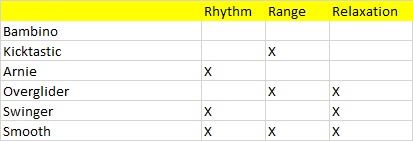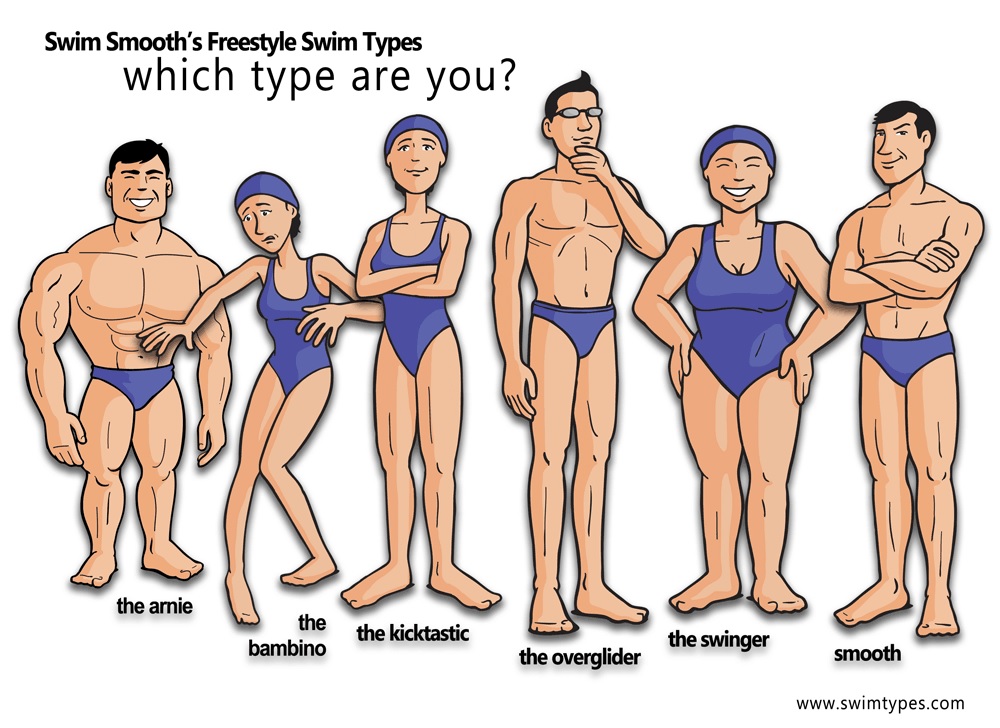Diagnosing & Treating Your Swim Limiter: Part 1
Alan Couzens, MS (Sports Science)
August 18, 2014
The guy above, Alexander Popov, represents my personal ideal of the 'textbook' freestyle stroke. I was very fortunate to spend some time during my studies apprenticing under his coach, Gennadi Touretski, who was, at the time, also the head coach of the Australian swim program at the Australian Institute of Sport. Not to put too fine a point on it, but Gennadi was a pure genius in all aspects of swim coaching – technique, physiology, you name it. However, if there was one area that he was known for, it was the emphasis on perfect technique for every single stroke swum during a session.
What constituted perfect technique for Gennadi? 3 things…
- Rhythm
- Range
- Relaxation
Others have since stolen and bastardized the concepts, but here is what they meant ‘from the horse’s mouth’.
Rhythm – Continuity of stroke, or in Gennadi-speak, ‘minimizing intra-cycle fluctuations’. Beyond just ‘keeping the arms moving’, Gennadi emphasized the importance of moving from the propulsive phases of one arm to the next and of using the body’s natural elastic response to full effect to maintain muscular efficiency in the stroke. He called this ‘fish-like swimming’.
Range – Through this rhythm, we want to optimize the athlete’s distance per stroke. The ‘through this rhythm’ part is important. He is not talking about gliding (in fact, the importance of keeping the arms moving was always emphasized), but rather getting the full stretch and full elastic recoil out of the most important propulsive muscles.
Relaxation – Again, in order to move economically, the muscles cannot be fighting one another. He believed that this is the essence of a good sprinter. When we look at Alexander, he epitomizes this.
Alex may have been a sprint swimmer, but these concepts transcend distances, and sports for that matter. A coach who ‘gets it’ and, in my opinion, has successfully translated these concepts to the world of triathlon swimming, is Paul Newsome of Swim Smooth
In addition to emphasizing the importance of this ‘balanced triangle’ of swimming, Paul has taken the concept a step further by identifying swim ‘types’ based on relative strengths and weaknesses that tie in well with the 3 R’s concept. Meet the gang below...
These swim types range from the apprehensive Bambino to the 'muscle it out' Arnie to the over-thinking Over-Glider, all the way up to the balanced 'Mr. Smooth', typified by our friend Mr Popov in the video above
At the risk of putting words into Paul’s mouth, here is how I see the interaction between Paul’s swim types and Gennadi’s 3R’s…

This swim ‘typing’ is an incredibly powerful tool when it comes to drill selection. There is a growing trend, particularly in triathlon swimming, to bash drills, with the prevailing thought being “…well, Open Water swimmers sure don’t have those pretty strokes that (some) pool swimmers have, therefore drills are a waste of time”. In my opinion, this attitude stems from a lack of understanding of the purpose of specific drills. If you’re not sure what outcome you are shooting for from a given exercise then, yes, that exercise is probably a waste of time!
So, here is what I am shooting for with the respective groups of drills…
Rhythm drills – Neuromuscular re-programming. The only way for the nervous system to become conditioned to a new movement is to practice that movement. If you think about it, this borders on a koan :-) But, if we get tricky, there are ways to force us to become accustomed to new movement patterns. This is the essence of rhythm drills. For example, Alexander would use a towing system attached to the roof of the A.I.S. to pull him at a speed slightly beyond current world record pace (& consequently force him to rate a little quicker than he was accustomed). You might not have access to this piece of equipment but, if rhythm is a limiter, there are other tricks that we can use that I will outline in my next article.
Range drills – In addition to the neuromuscular elements mentioned above, adopting a particular position demands that the athlete have the mobility to get in that particular position(!) If you grew up swimming & you add up all of those milliseconds that your developing body spent in a catch or streamline position, you have a good chunk of time! If you did not grow up swimming and your body is no longer ‘developing’ (at least not in the good way :-), you have some ground to make up! To put this time in perspective, Williams (1998) found that it takes more than 30min of end range stretching per joint, per day to merely prevent normal sarcomere loss! Range drills are an excellent way of combining these 2 objectives of ‘learning’ optimal swim positions and spending a lot of time in ‘end range’. At the very least, please TIGHT streamline off EVERY wall. It all adds up!
Relaxation Drills – If you’re feeling like you’re on the verge of drowning, relaxation can be tough! :-) Seriously, there are 2 primal instincts that can come into play to seriously mess with your stroke:
- Holding your breath when your face is in the water
- Fighting to stay on top of the water.
If you lack relaxation, you won’t have the foundation for building rhythm or range so the most important objective of all is a simple one – become relaxed & ‘at one with’ the water. It can take a lot to overcome those primal instincts, especially for some folks who have a bad experience buried deep in their cerebellum so very simple drills that separate breathing and body position from propulsion can be very high value.
This leaves us with a lot of potential drills – 3 different categories, with a whole bunch of specific drills within them. Looks as though I failed again in my mission of simplifying things :-) Maybe Paul can help me. Let’s return to the notion of ‘swim typing’ here. Not only can identifying your particular limiters help you to identify the best drills for you. It can also stop you from doing drills that will actually make things worse!
If you are an overglider who has great range of stroke but poor rhythm and you spend hour upon hour with your arm sitting in your front quadrant, is that going to improve the situation? Similarly, if you’re a beginner who is anxious in the water and rating like crazy just to avoid sinking, are stroke rate drills your best answer? Obviously, the answer to both is no & so we are left with a mission – identify your own personal limiter and then select the drills that best fit.
Your homework is to head on over to www.swimtypes.com ,take the quiz (along with the other assessment techniques) to identify your particular type (& subsequent limiters). In part 2, we'll delve into diagnosing your swim limiter in a little more depth & in Part 3, I’ll give you my own take on the best drill prescription to ‘treat what ails you’.
Train smart!
AC
Tweet**************

